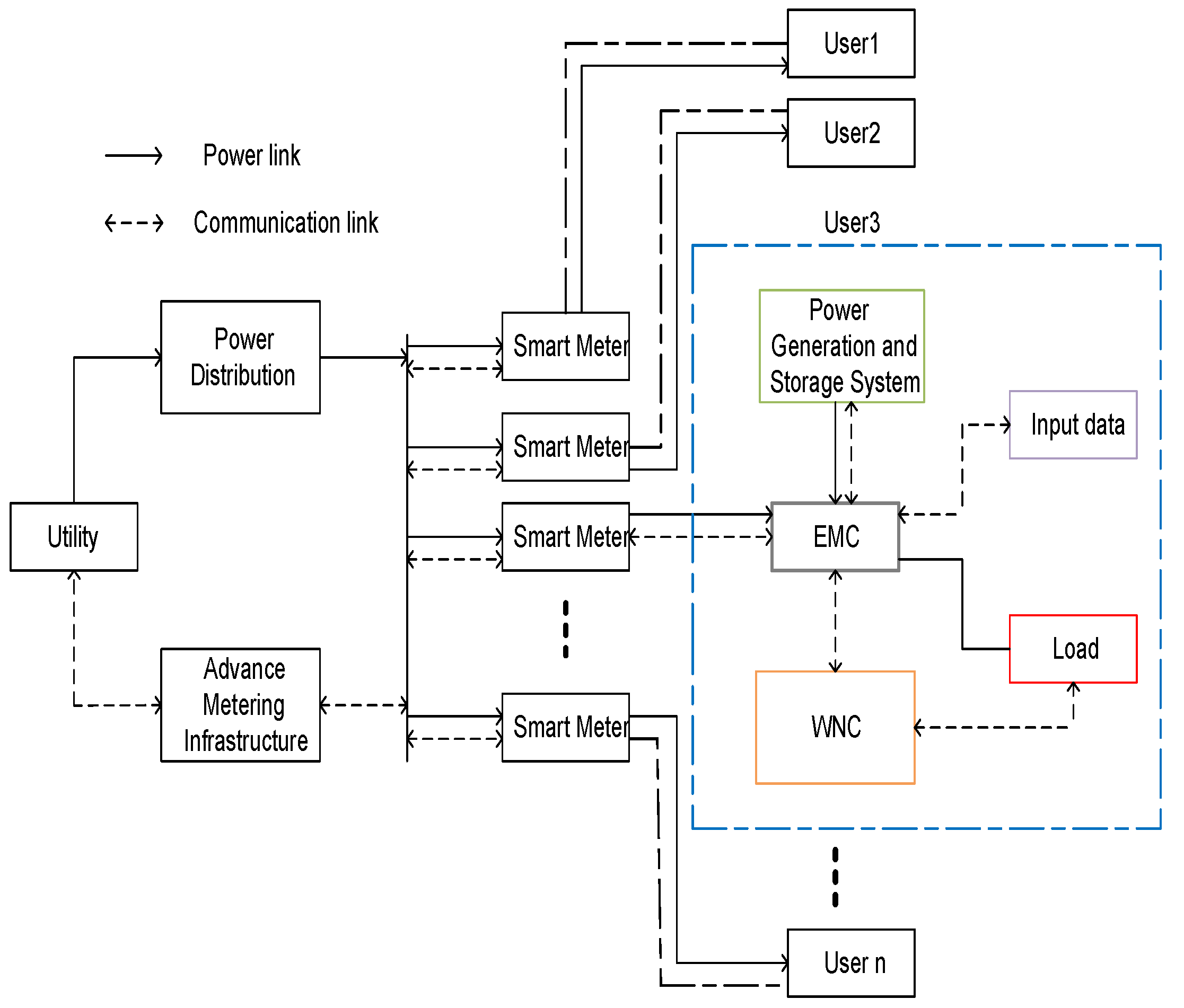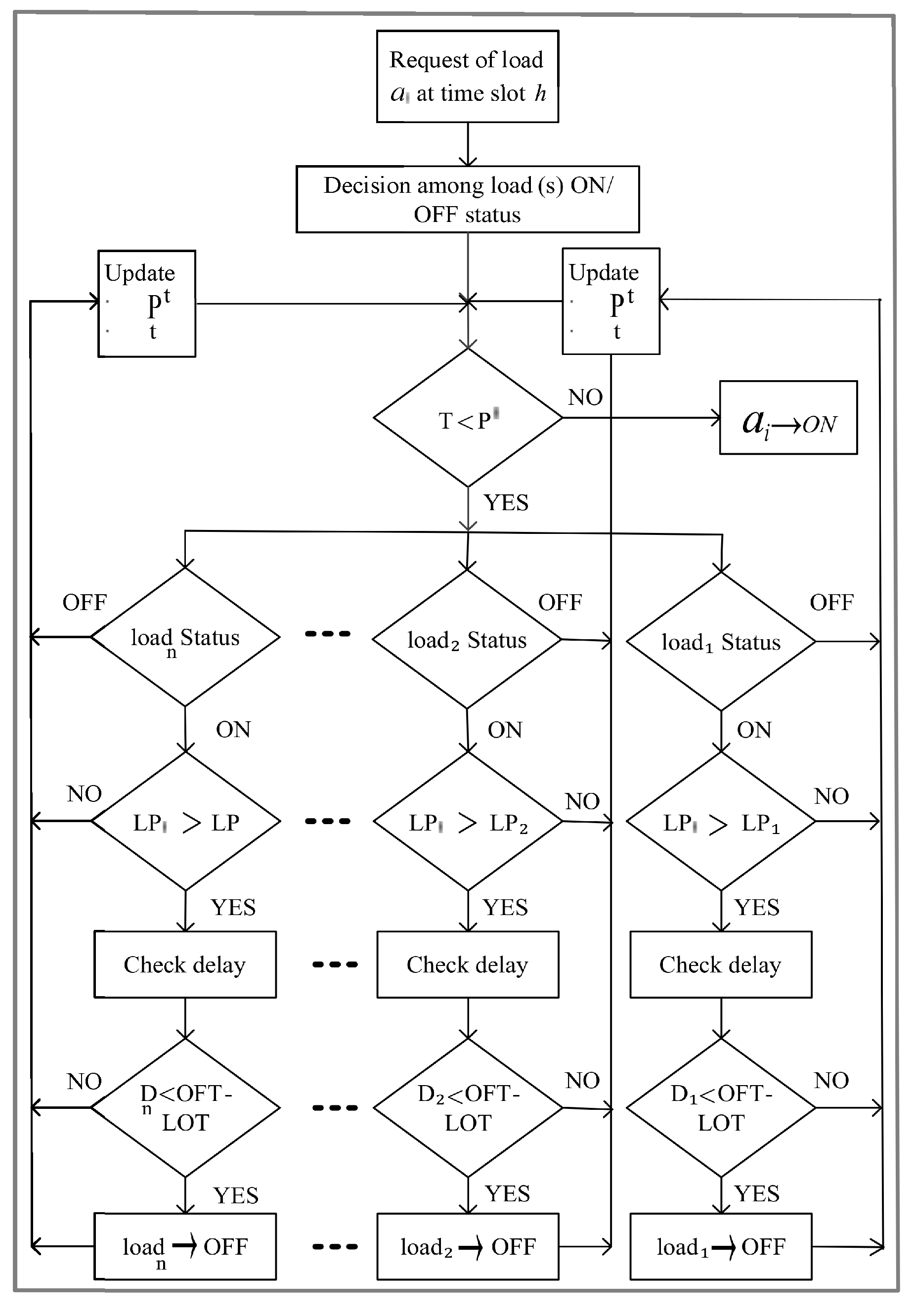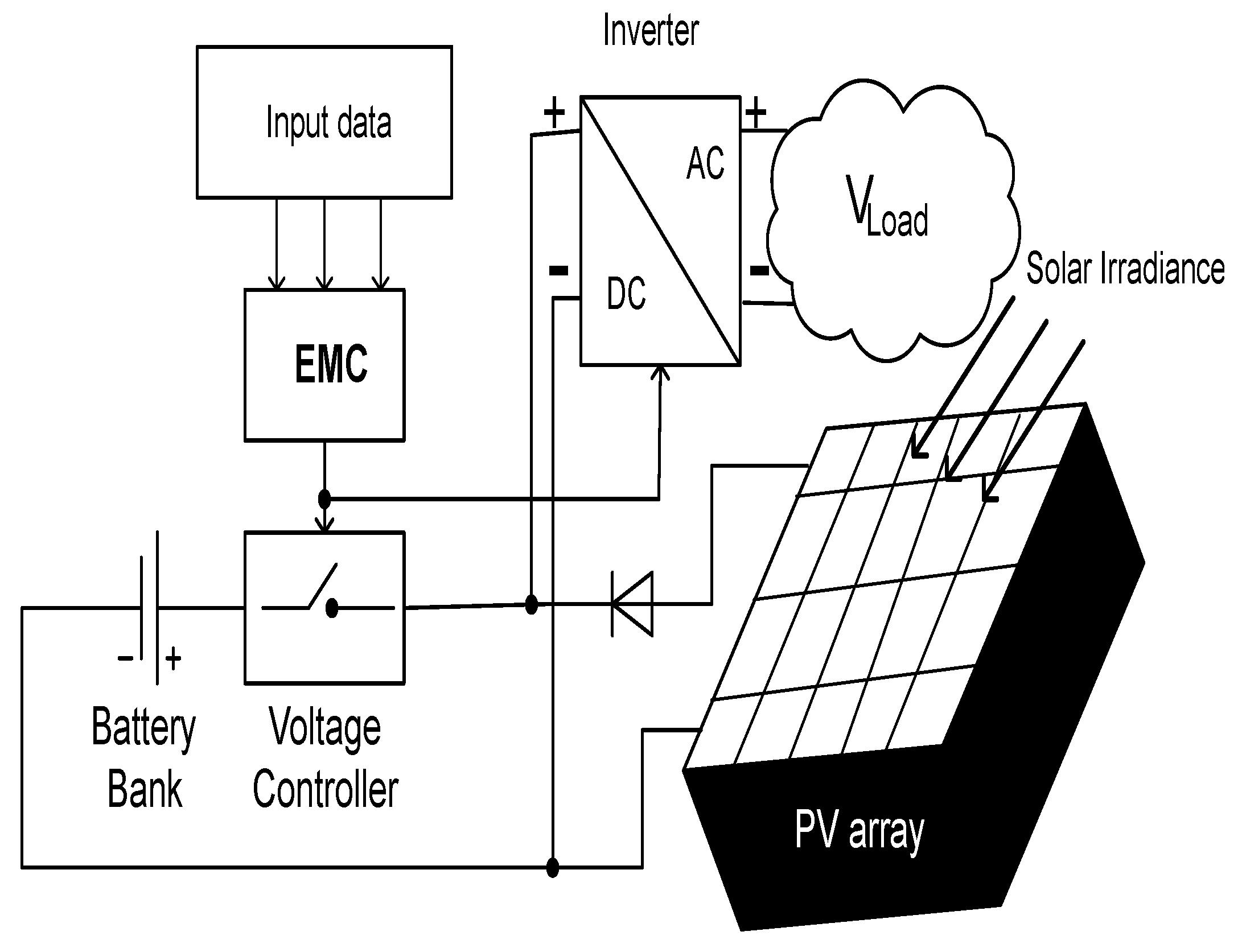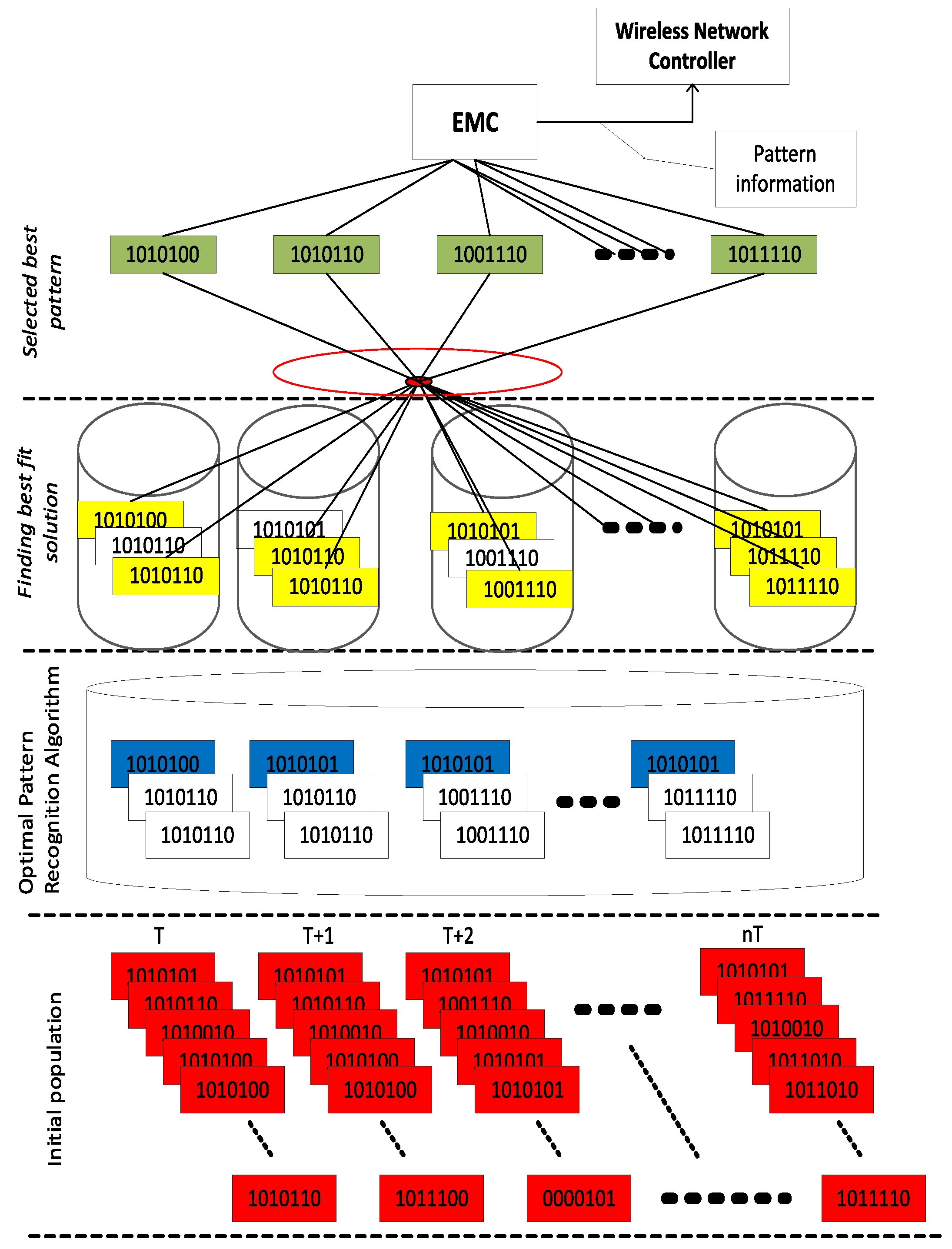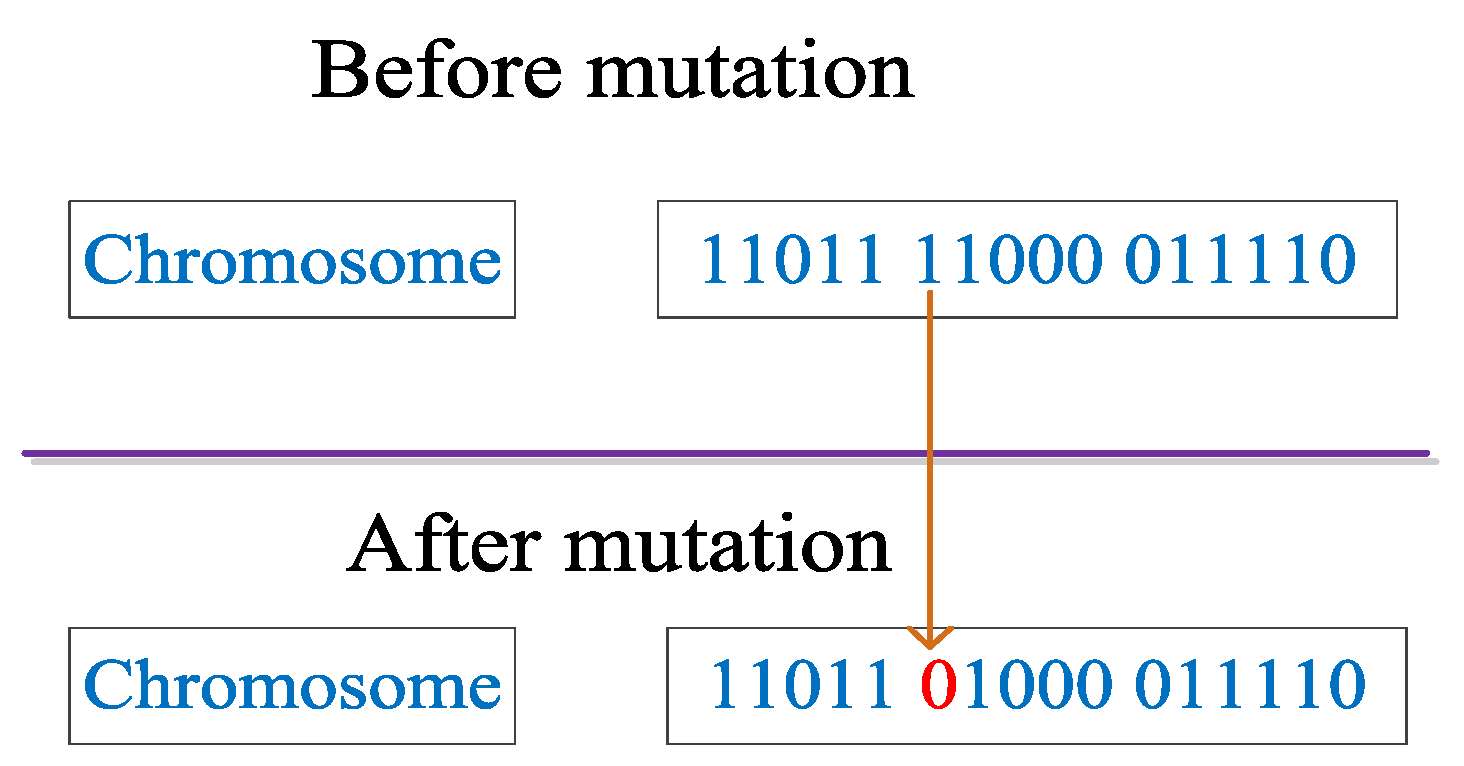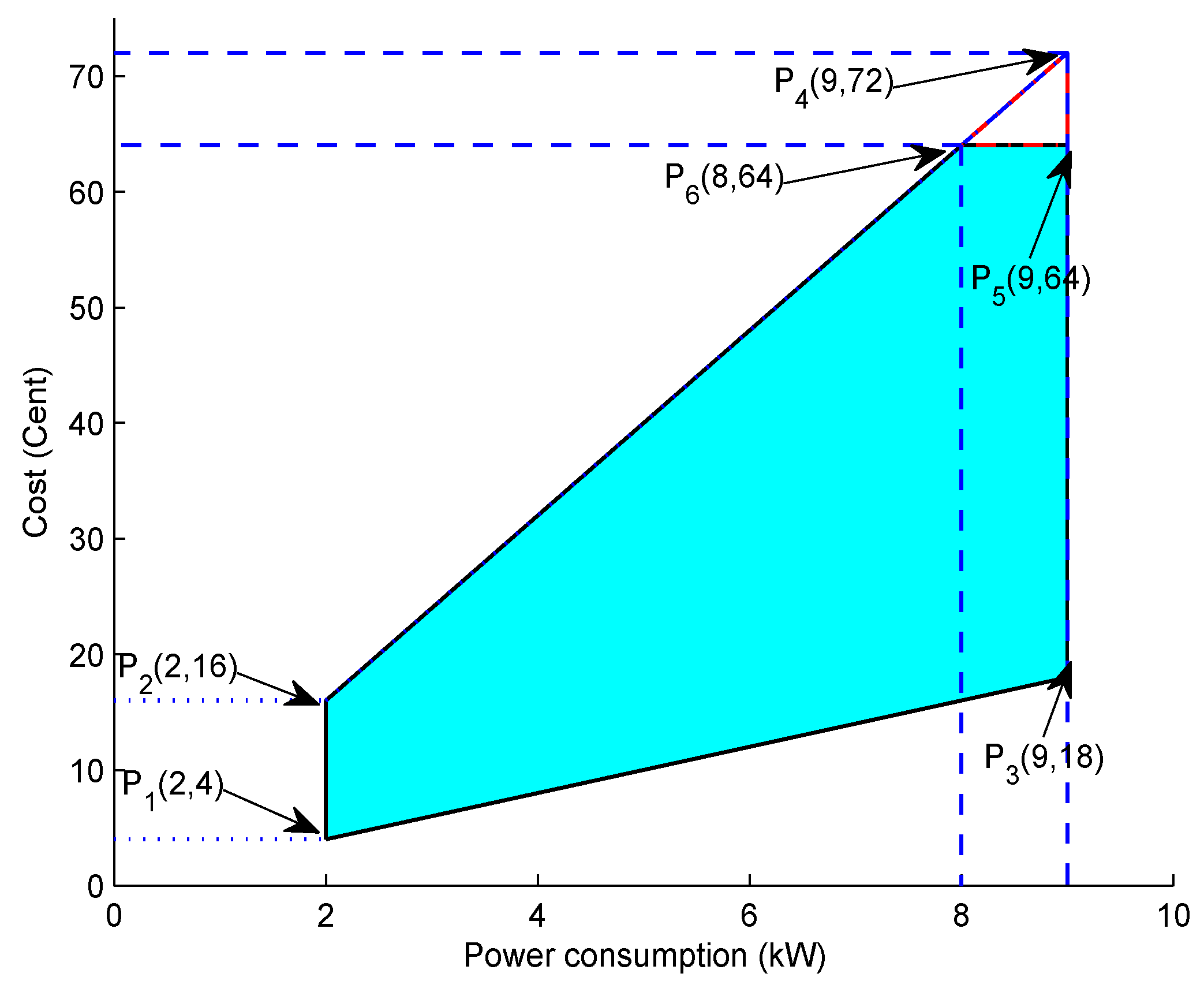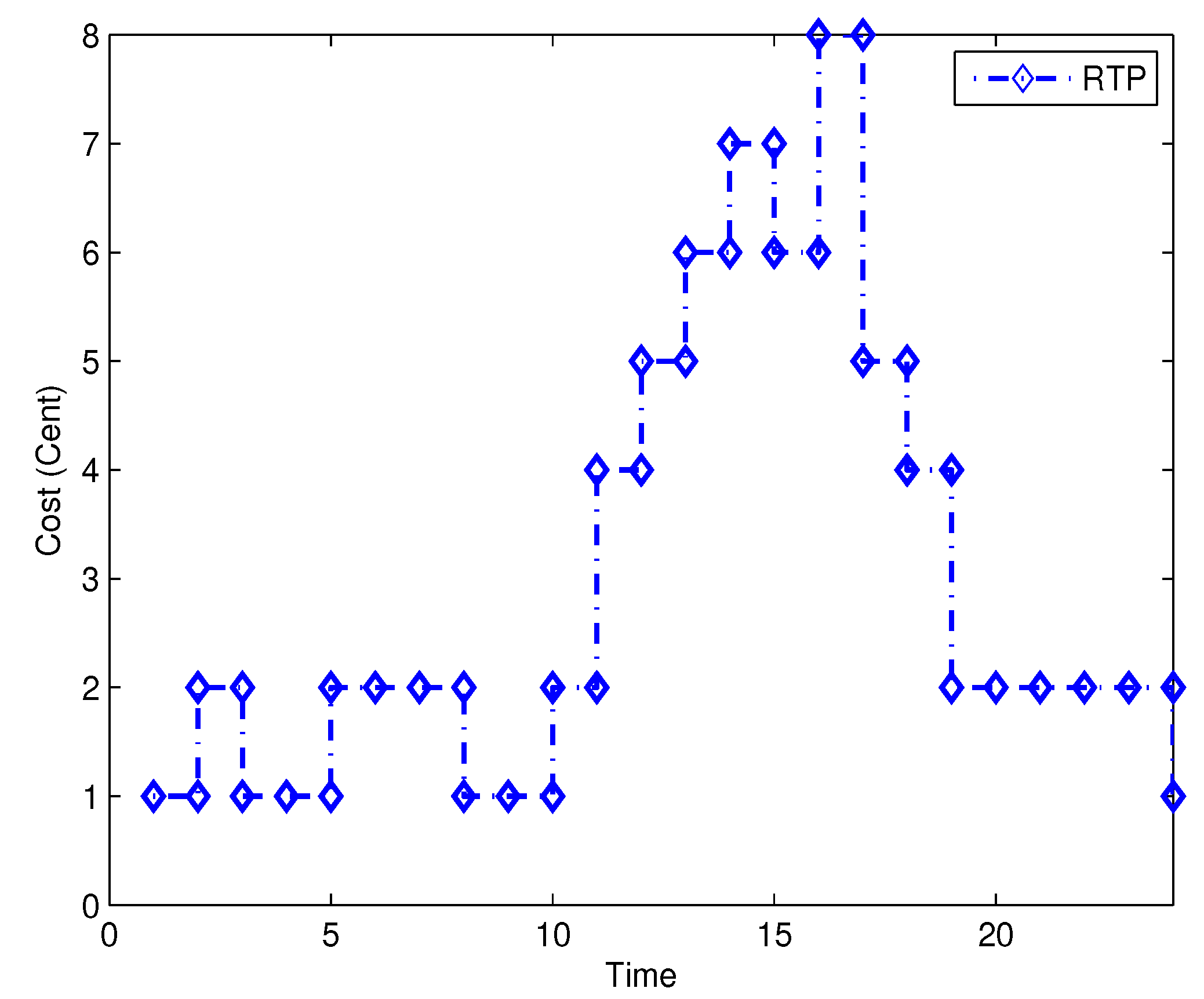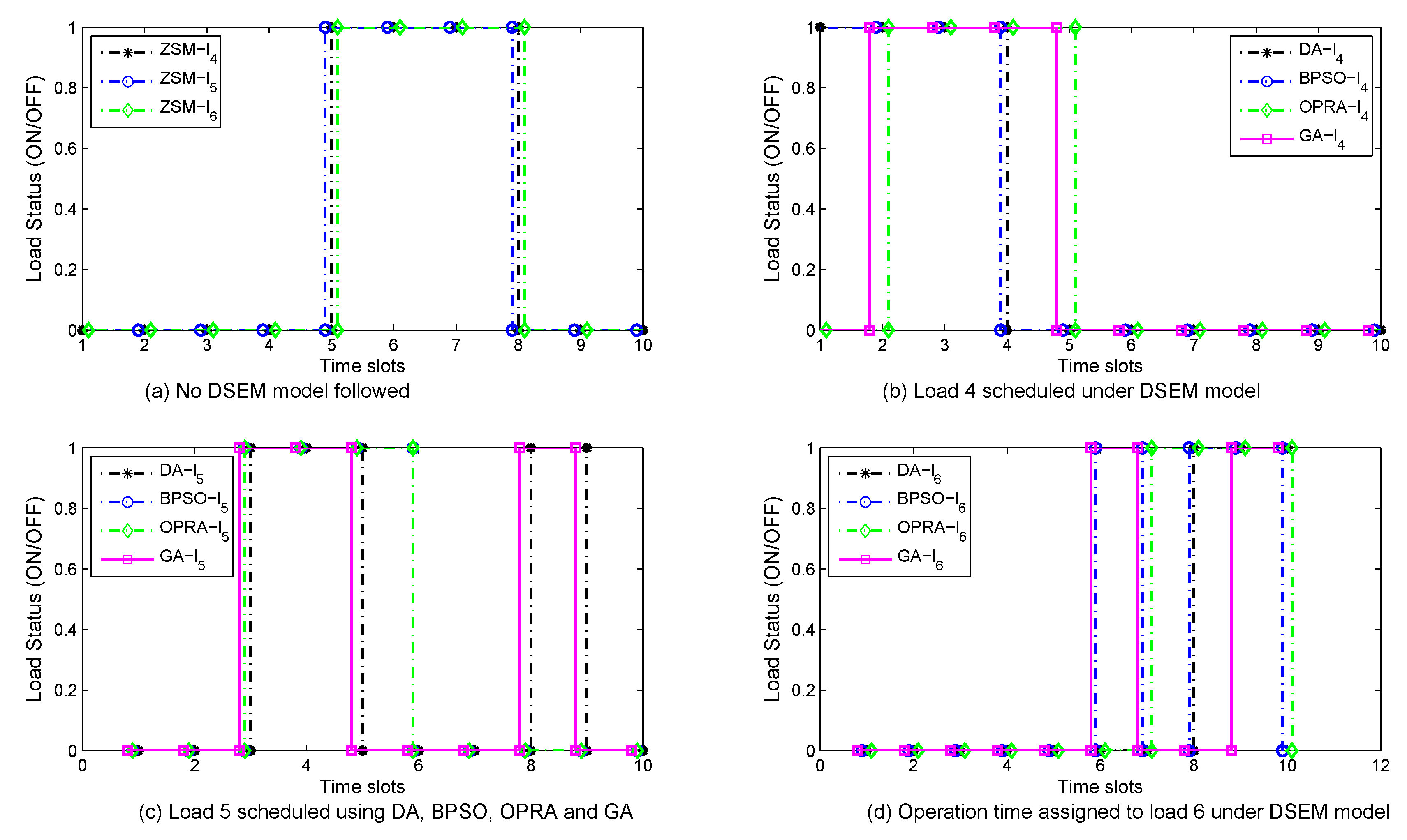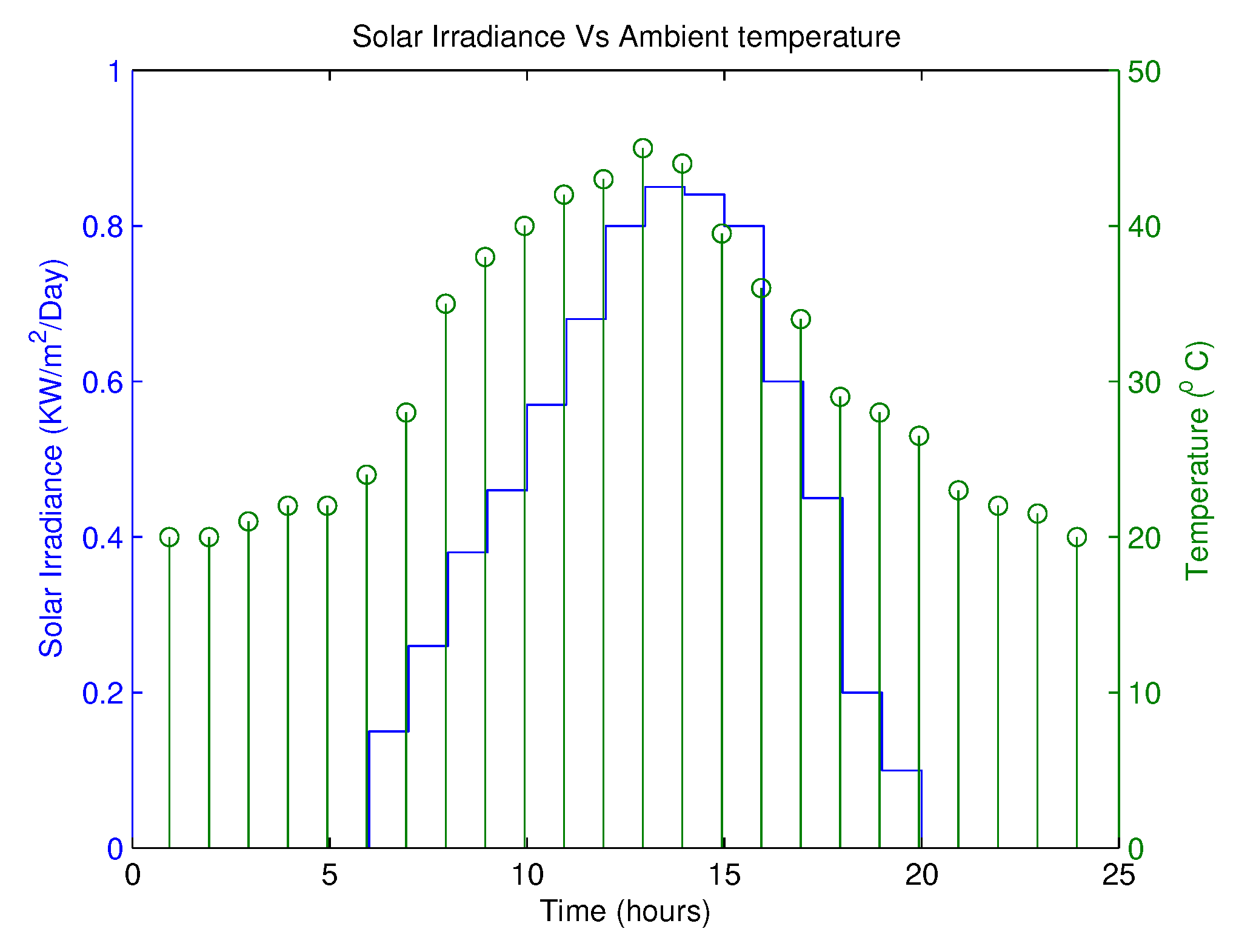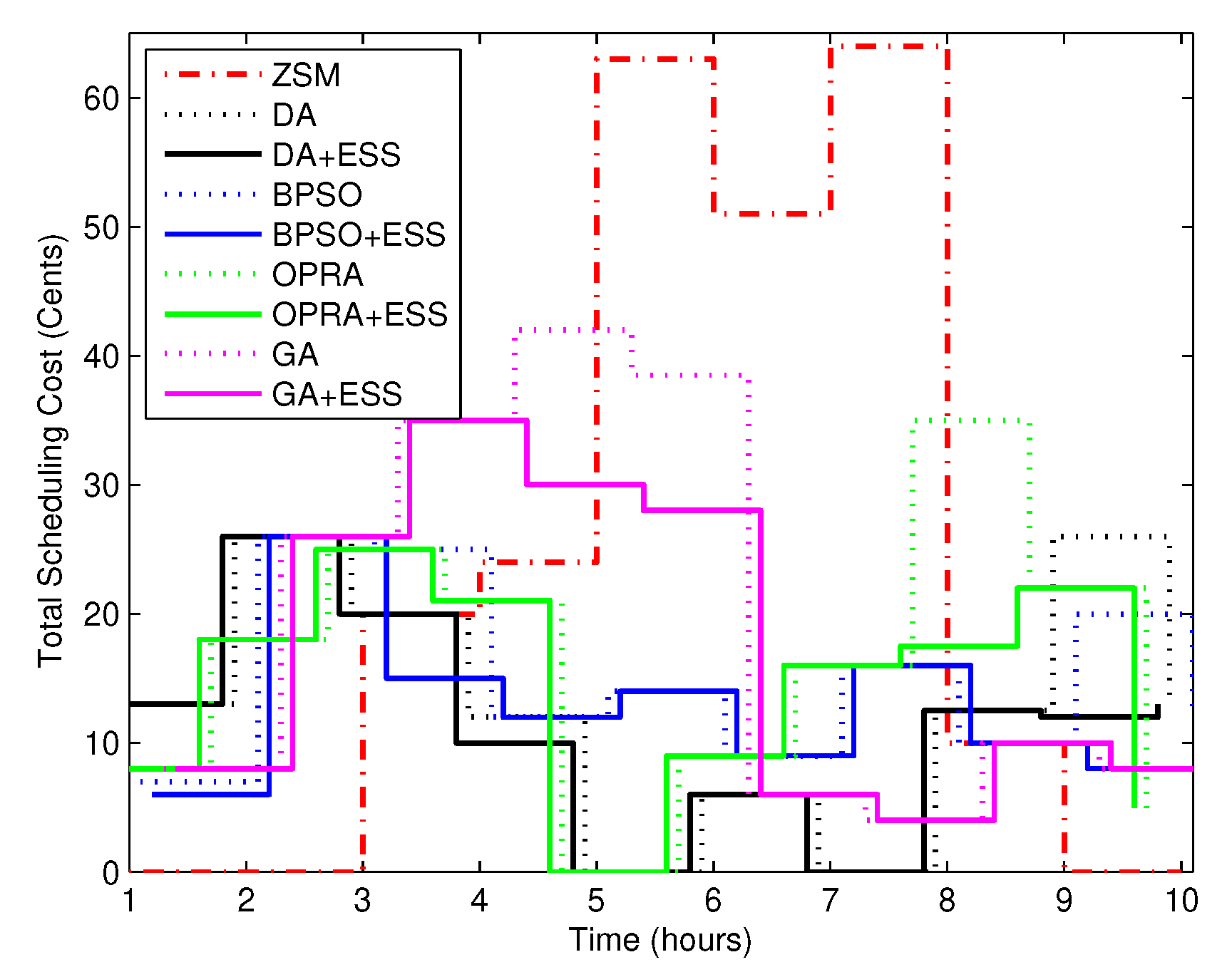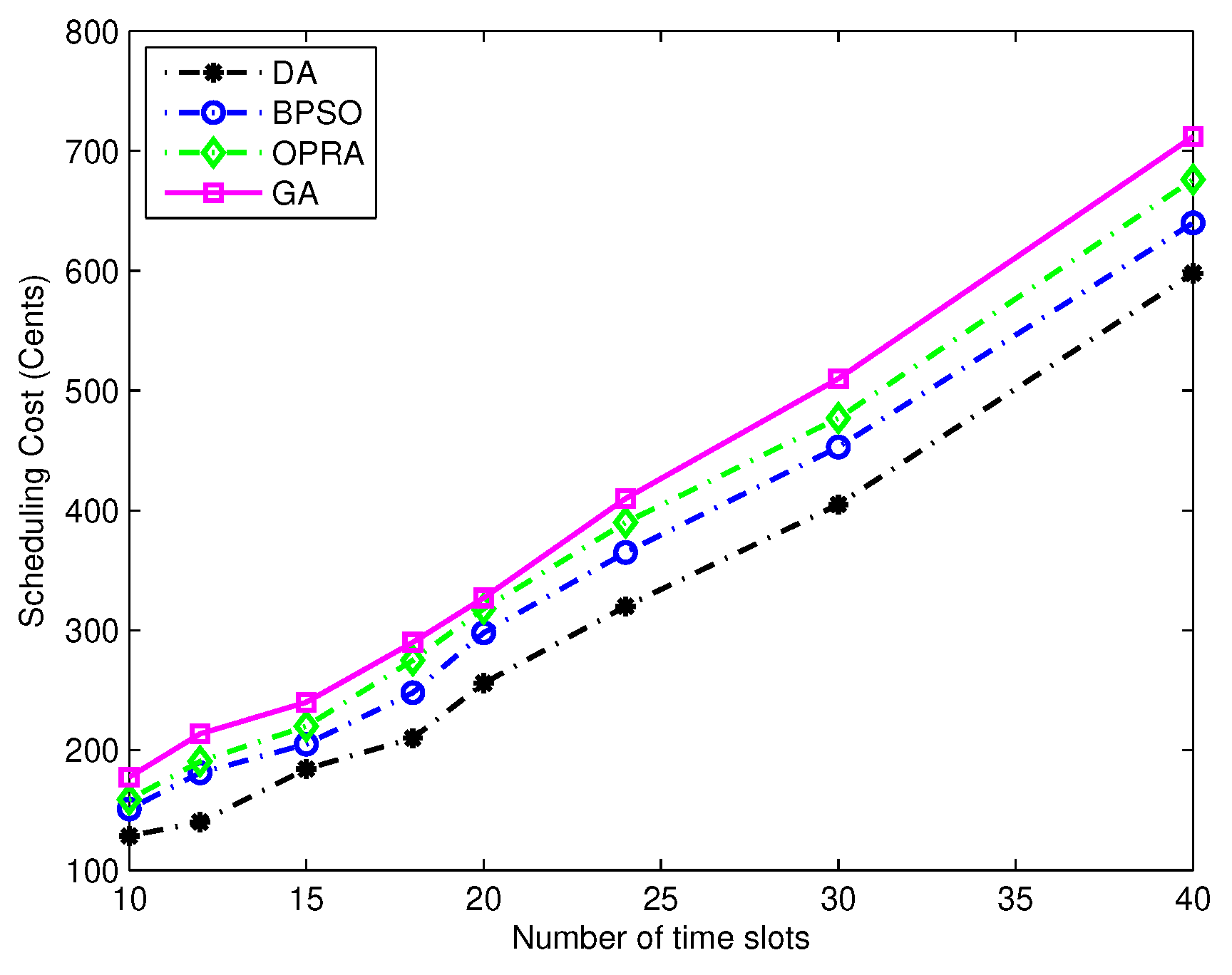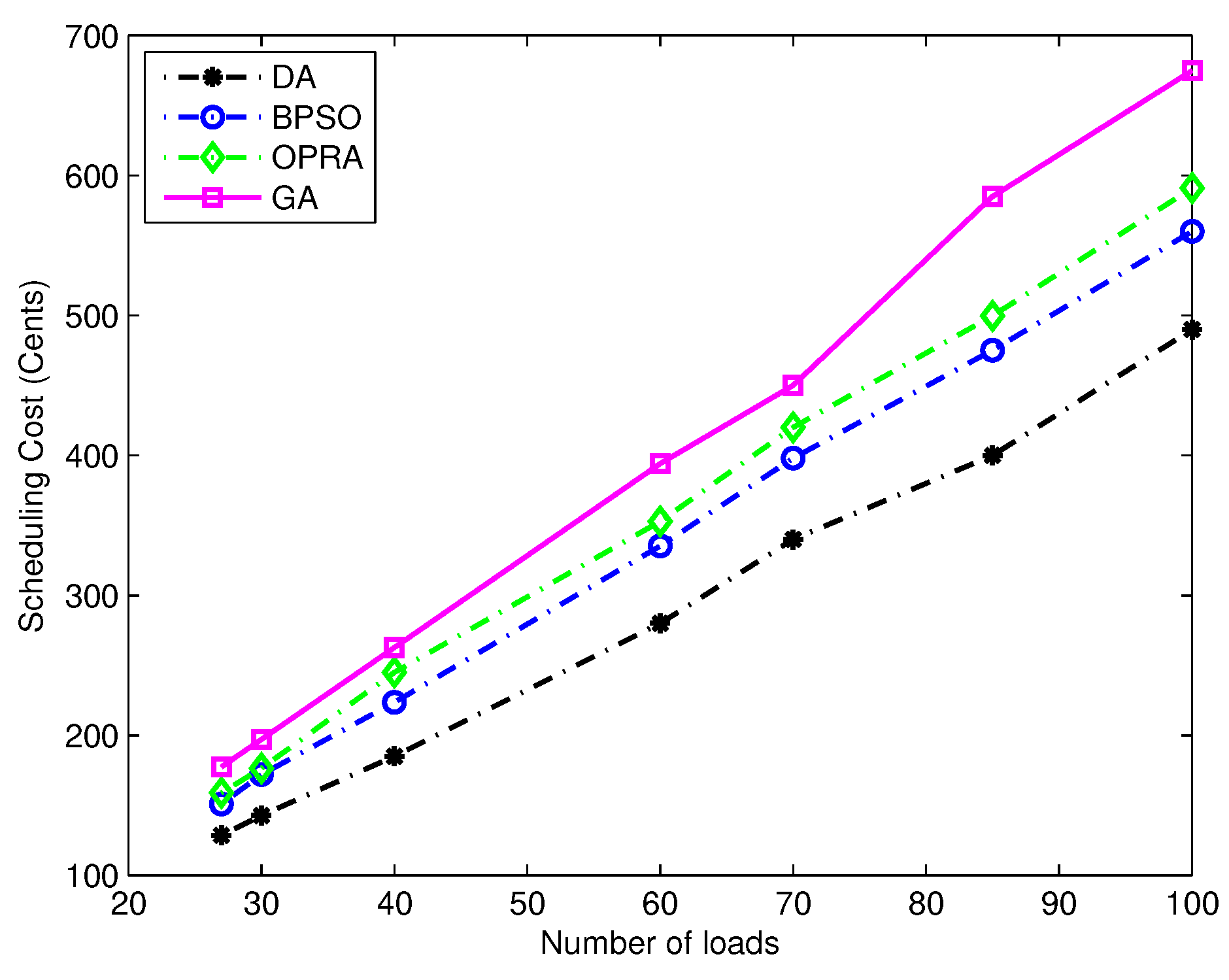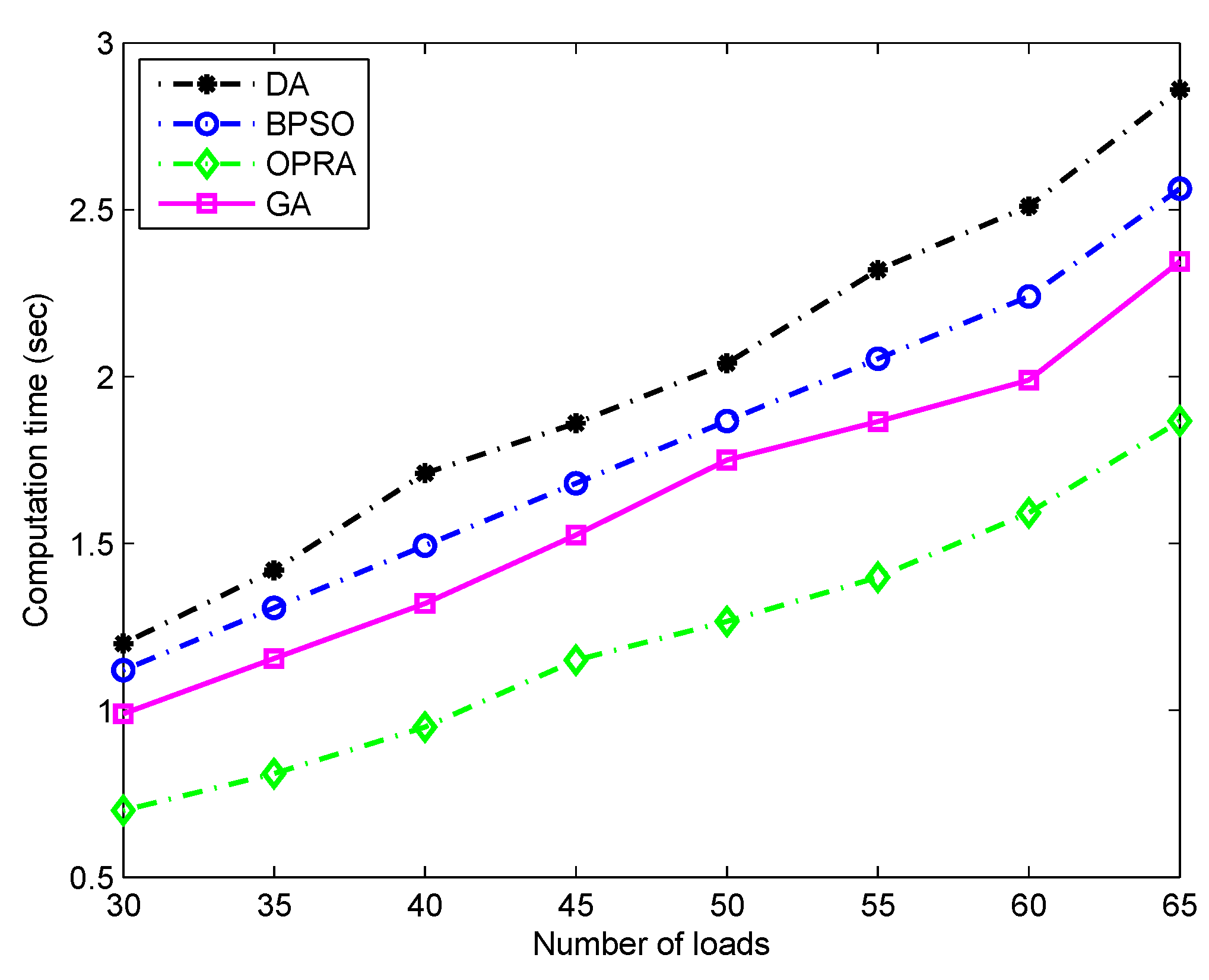1. Introduction and Motivation
With the rapid increase in population and economic growth, global energy consumption is also increasing drastically. High reliance on fossil fuel and increased use of thermal power resources contributed to an increase in CO
emissions that causes an increase in global warming [
1]. While adopting the ways to tackle the increased energy demand, a reduction in greenhouse gas emissions is a major challenge that must be met on a global scale in order to promote energy sustainability. In recent years, while reducing the gap between energy generation and demand through a combination of thermal and nuclear energy resources, the pursuit of power generation through renewable energy sources, such as solar, wind, biomass and lowering environmental load, has been promoted with the aim of reducing greenhouse gas emissions, significantly. Renewable energy is becoming widely accepted as a new source of energy to provide power to residential and commercial buildings around the world. On the other hand, energy is one of the basic necessities for sustainable development of society that must surely be delivered in an efficient way in order to promote a green environment with reduced CO
emissions [
1]. However, the great paradigm shift due to the involvement of information and communication technologies (ICTs) the traditional ways of energy generation, transmission and distribution need to be upgraded [
2,
3,
4,
5,
6,
7,
8]. The author in [
9] presented a hybrid opinion network containing of continuous and discrete valued agents. This model discussed a communication behavior for social dynamical systems. The scaled consensus of switching topologies with continuous and discrete time subsystems is investigated. The traditional electricity infrastructure is not fully capable of handling and managing the distributed energy resources with high quality of communication service and grid stability. This is due to the fact that increasing energy demand needs extra costlier generation or back-up reserve capacity units that lead to high tariff rates and CO
emissions.
Therefore, to cope with such types of situations, a smart grid (SG) concept has recently been introduced which has the capability to fulfil the load demand that benefices both the end users and utility market [
10]. The users can enjoy an uninterruptible power supply with economical tariff rate and utility can avail the opportunity to improve power system stability through supply–demand balance. The former can be achieved by exploiting efficient load management through distributed as well centralized control strategies [
11]. For this purpose, different researchers introduced residential and commercial load scheduling techniques considering both end user and utility objectives [
12,
13]. Among these solutions, the major emphasis is given to balance the load demand through market supply without heavily relying on peak power plants and reserved capacity units [
14]. However, some researchers focussed on balancing the load demand through load scheduling and energy management using optimization technique. Although these kinds of techniques are efficient in managing the load demand with partial or full control on residential load [
15]. The peaks and troughs in the aggregated user energy demand profile are caused by the temporal variations in energy demand. The user’s participation is required in balancing the load by allowing the grid to reschedule the load. However, the end users are affected due to unplanned load scheduling by the grid [
16]. For example, it is assumed that the user suffers the same degree of inconvenience if base and/or non-flexible load is shifted in either direction (before or after) of its most preferred time slot. In other words, delaying a base and/or non-flexible load by 2 time slots or advance scheduling the same load by 2 time slots will result in same amount of user inconvenience. To handle this situation, some researchers put their efforts into devising the load control strategies with major focus on load scheduling without disturbing end users’ objectives [
17]. Furthermore, it is also equally important to understand that world is moving from a centralized energy control system to a distributed control and management system with the objective of promoting the environment [
18]. In addition, this is also due to the European vision of the year 2030 and 2050 for achieving the objective of green energy and green economy, incorporation of renewable energy resources such as PV, wind, geothermal, biomass and electric vehicles into existing electrical systems is required [
19]. In achieving these objectives, numerous researchers have done some work in managing the integration of distributed energy resources through autonomous control strategies [
20]. Some researchers focussed on developing the autonomous control algorithms that provide benefits to only end users [
21], while others focussed on maximizing utility and energy retailers benefits [
22]. Some work also tackled the utility and end user objectives as a joint objective and tried to find the solutions to provide the benefits to both parties [
23].
In recent years, the resources of water for producing energy are depleting very quickly due to the effects of climate change on hydrology patterns [
24,
25]. It is estimated that only 200,000 km
—1% of water is available for agriculture, residential, industrial and power sectors in order to meet everyday needs [
26]. Furthermore, the per capita energy demand is expected to rise significantly due to the rapid growth of population and industries in developed and developing countries [
27]. As a result of these great challenges, the efficient management of the available capacity is imperative to prevent the over-exploitation [
28]. On one hand, these important challenges are considered for managing the energy resources efficiently, whether these are used used for the end user comfort or upgrading the existing standards or infrastructure [
29]. On the other hand, better management of fuel intensive resources and end user consumption behaviours can alleviate the strain on these commodities [
30]. Therefore, flexible control of the energy supply and use system [
19,
31] is crucial within the context of renewable energy and storage integration [
32]. In addition, a recent study shows the water usage for carbon-based and nuclear fuel-based energy as follows: (i) oil from oil reservoirs (70–1800 L/GJ), (ii) shale gas (36–54 L/GJ), coal (5–70 L/GJ), (iii) uranium (4–22 L/GJ), and (iv) traditional oil (3–7 L/GJ) [
31]. Another study reveals that 76.9% of electricity is produced from oil, natural gas, coal, and nuclear fuels in the year 2015, while only 16% is generated from hydrothermal power plants. The energy generated from hydrothermal power plants led to high emission of carbon and causes serious environment concerns [
33]. Similarly, a significant amount of power is required to support industrial and residential sectors and with this level of coupling, significant synergy could be observed while analysing these types of coupled system holistically. In the meantime, the SG concept was introduced and gained significant attention is given to the integration of renewable energy resources, especially into the demand side load management as a mean of de-carbonizing the environment. The importance of producing energy from coal, natural gas, oil and nuclear commodities is decreasing day by day, thus results in moving towards integration of green energy concept. The integration of green energy (solar and wind) and storage systems are at present gaining popularity [
34]. Recent studies regarding variable energy resources and energy management through electrical load scheduling show that a dynamic control mechanism is required that integrates the intermittent nature of variable energy resources and dynamic energy consumption trends. It is a complex task, however, studies showed that due to high penetration and intermittent nature of variable resources, operator and energy retailers are restricted to rely on the combined dispatch of all energy resources. Operators need to encourage the end users to install stand-alone renewable energy systems to improve the system stability through load management. Otherwise, the mismatch between demand and supply may lead to infeasible dispatch of energy and increase the marginal cost production [
35,
36,
37], while the challenges of utility and residential premises in managing the residential load demand with the integration of renewable energy resources may seem unrelated. However, these are actually interlinked entities and their resolution is potentially synergistic. Renewable energy technologies are a cheap source of energy and provide with low CO
emissions. Since, renewable energy can easily be stored in back-up storage systems and can act as a flexible source of energy regarding supply and demand side of electricity systems [
38]. Thus, demand response (DR) programs have an eminent effect on SG infrastructure in managing the end user load via market clearing prices and incentives. Because, residential sector is consuming 40% of energy and diversity in energy consumption plans poses major challenge to energy retailers to encourage them in participating energy management programs. The effective outcomes of SG concept are difficult to achieve without active participation of end users in DR-based energy management programs.
The review of relevant literature shows that homes equipped with Home energy management (HEM) architectures significantly reduce the electricity cost. HEMs equipped with renewable energy generation and storage architecture are given importance but the load matching with the renewable energy generation is ignored. Several HEM architectures efficiently shift the load from grid to an on-site energy generation and storage system, but the design of PV-based energy generation and storage setup has not yet been reported. An efficient and autonomous HEM architecture is required with twofold objectives, i.e., benefices the end user and utility. With the end user perspective, HEM needs to incorporate the on-site PV generation and storage system that optimally uses the grid and stored energy to maximize the comfort level. With the utility perspective, HEM should limit the energy consumption to a certain threshold level to avoid the load shedding, blackouts and use of peak power plants. Thus, our objectives are to design a demand side energy management (DSEM) model that (i) Categorizes, monitors and controls the household different loads according to end user preference and priority, (ii) Maximizes the end user comfort level by scheduling the load with minimum delay, (iii) Anticipates the optimum number of PV modules for an on-site load, i.e., smart home in our case, (iv) Efficiently integrates the PV generation and storage system with energy management controller (EMC), (v) Optimally manages the grid energy and on-site stored energy, (vi) Minimizes the end user electricity cost, (vii) Minimizes the PAR to increase the grid lifetime, avoid the blackout, load shedding and use of Peak Power Plants (PPPs), and (viii) Efficiently formulates and solves the optimization problem considering the constraints.
2. Literature Review
With rapid increase in energy demand and CO
emissions due to massive use of fossil fuels, a significance attention needs to be given to consider renewable energy resources. Among all renewable energy resources, the most promising resources with nearly zero carbon emissions are the windmills and PV systems [
39]. In comparison to both of the resources, energy obtained from PV system is highly attractive due to its abundant nature. Therefore, several incentive policies are designed especially for the end users to encourage them installing PV systems to alleviate uncertain energy demand during off peak hours. The integration of PV systems at end user side will reduce the energy cost, PAR, blackouts and carbon emissions, particularly. Consequently, PV systems tied with grid are expected to sustain popularity for the next generations [
40]. One of the major challenges during the design of energy management systems (EMS) with the PV systems is its intermittent nature and thus leads to an increased design complexity. Other major challenges of PV system integration with existing electricity supply system are the variable PV generation and dynamic energy demand trends. The work reported in [
41] used the on-site battery energy storage and PV system to solve the supply–demand mismatch problem. The work discussed in [
42] focussed on efficient energy use for cost saving through an optimization algorithm with the integration of battery storage systems. The end user achieved the reduced energy cost by compromising on their comfort level. Thus, cost reduction and comfort maximization are contradictory objectives, hence difficult to achieve simultaneously.
Due to the battery-based ESS, autonomous control algorithms considering variable energy resources and dynamic energy demand are sought to optimally manage the available resources [
43]. Therefore, combined dispatch and use of power resources considering a utility tariff scheme leads towards a complex optimization problem. Thus, finding the optimal charging and discharging patterns of battery storage system would ultimately minimize the end user electricity cost and maximize the power system stability. Numerous studies are available dealing with the complex nature of such types of problems and their possible solutions [
44]. For nonlinear problems, it is less feasible to use mixed integer linear programming (MILP) and linear programming (LP) approaches without transforming the problem first [
45]. The authors in [
46] formulate the objective function using a binary and discrete decision variables with a low computing resources [
47,
48]. The authors in [
49] used a hybrid computational intelligence approach for energy optimization using GA and Evolutionary algorithms. In this study, load is scheduled in such a way to minimize the electricity cost rebound peaks. Another study used ant colony optimization (ACO) algorithm to solve predefined load scheduling problem [
50]. It is also concluded from the study that heuristic and metaheuristic algorithms such as; PSO, GA, ACO, are comparatively efficient in achieving the optimized solutions when uncertain decision variables are involved [
51,
52].
The extensive literature review regarding load scheduling has come up with individual technologies, policy recommendations, system analysis and control techniques, energy management, PV-based generation and storage integration issues [
53]. Policy-based system analysis techniques sometimes tend to take statistical, qualitative and qualitative approaches while focusing on efficient resource management especially at residential premises [
54]. Similarly, quantitative approaches have been case study driven and thus focusing on realistic solutions by taking into consideration utility and end user objectives. Some studies have a particular focus on devising customer centric solutions, while others tend to consider utilities concerns as well [
55]. In the meantime, some researchers being able to devise autonomous energy management solutions considering utility and variable energy resources at the same time to facilitate both parties [
56]. However, it is found that due to contradictory objectives, the solutions still have some gaps to be handled efficiently [
57]. Another problem associated with some load management techniques is the single layer optimizations, such as; residential load scheduling [
58], generation scheduling with distributed resources [
59], optimal storage integrations [
60], end user comfort management with particular focus on cost reduction [
61]. Thus, due to lack of generic techniques considering respective objectives, most of these techniques neither feasible nor generally extensible to other case study geographies [
62].
To complete the discussion, several researchers used different algorithms and energy management techniques to achieve energy saving and optimization objectives. Statistical results show that the building equipped with EMSs have energy saving factor from 11.39% to 16.22% each year. The EMS used for artificial lighting system reported the highest energy saving factor, of up to 39.5%. Similarly, the energy saving factor for HVAC and other equipments are reported as 14.07% and 16.66%, respectively. Furthermore, the published work also reported that EMS based on different optimization algorithms, such as the harmony search algorithm, enhanced differential evolution, and harmony search differential evolution, efficiently reduced the end user electricity cost by a factor of 17.84%, 11.12%, and 13.2%, respectively. Homes and buildings equipped with EMS architectures significantly reduce the electricity cost. However, EMS equipped with renewable energy generation and storage system and load matching with the PV generation system is not yet reported in the residential sector.
2.1. Contributions
The review of relevant literature shows that homes equipped with HEM architectures significantly reduce the electricity cost, although HEM equipped with renewable energy generation and storage units are given importance. However, the estimation of installed capacity of renewable and storage units as per load requirements is yet to be explored and significant work is required in this area. The literature reveals that HEM architectures efficiently manage the load considering grid and on-site energy generation and storage systems. However, the design of PV-based energy generation and storage systems need to be explored in order to get the full benefits of SG technology. Thus, an efficient and autonomous HEM architecture is required to provide benefits to both end user and utility. With the end user perspective, HEM needs to incorporate the on-site PV generation and storage system that optimally uses the grid and stored capacity to maximize the comfort level. With the utility perspective, HEM should be able to minimize the energy consumption to a certain level to avoid the load shedding, blackouts and use of expensive peak power plants. Thus, on the basis of aforementioned discussion, this work proposes a new home energy management (HEM) mechanism to address the limitations and drawbacks. The proposed work has the following capabilities; it facilitates the end users to decide whether they want to maximize comfort or cost (through a waiting time parameter), efficient load management with the integration of RES and user involvement significantly improved the power system stability through balanced supply–demand profile and it helps in reducing CO emissions as renewable energy and storage units act as “first choice” in the proposed work. The key contributions of this paper are discussed as follows:
We first categorize the loads based on user preference requirement and priority of operation. Then based on this, mathematical models of each individualized load category are presented to help optimized working patterns.
To facilitate end users in terms of less cost and high comfort, operational time of each load is modelled as a delay parameter, where high priority is given to critical load, while low priority loads are given flexibility in their operating horizon with the objective of minimized cost and delay.
To avoid users to buy costlier electricity tariff, on-site PV generation and back-up storage systems are integrated in our model. For this purpose, PV generation and storage systems are optimally designed in such a way to provide baseline load capacity to all respective loads without heavily relying on grid energy source. This helps in minimizing the cost and discomfort of end users along with reduced CO emissions.
Then based on mathematical models of load consumption, delay and ESS, the optimization problem is formulated as a multi-objective optimization problem which is solved by using DA. However, for optimality analysis, we compare the results of proposed DA with GA, BPSO and OPRA. Furthermore, the performance and complexity of the algorithms are also analysed in terms of large number of loads and time slot variations.
The simulations are performed against different case studies and results are obtained for cost, PAR, CO and discomfort reduction.
2.2. Paper Outline
The rest of the paper is organized as:
Section 3 discusses the DSEM model describing the mathematical description of different loads, on-site PV generation and storage systems, hybrid energy system and cost calculation mechanism.
Section 4 presents the formulation of multi-objective optimization problem.
Section 5 provides the description of different algorithms which are used to solve the proposed problem.
Section 6 presents the results obtained from different algorithms focusing on load scheduling, cost and PAR reduction, optimal PV energy and storage integration and use. Finally, the paper is concluded in
Section 7.
4. Formulation of Multi-Objective Optimization Problem
The objective of proposed model is to optimally schedule the household load over the given time period by taking into consideration respective constraints and limits. In this regard, the proposed algorithm is designed to optimally integrate PV system, ESS, and grid energy resources with the objective of cost and PAR reduction with increased comfort level. Hence, the primary objective is to fulfil the load demand through PV and ESS system without heavily relying on grid energy source.
subject to:
The constraints shown in Equations (47)–(50) define: (i) maximum load delay between starting and finish time while completing its task, (ii) load a must complete its assigned task within the allowed time ( and ), (iii) load a consumes certain amount of power during its operation time, and (iv) status of the load a (0 for idle mode, 1 for operation mode).
Therefore, the optimal management and use of the energy resources lead to effective cost minimization, because the electricity prices are dynamic in nature and usually known in advance to customers in a day-ahead market. However, prices are unknown to users in a real time pricing (RTP) environment, where it is more difficult to optimally manage the loads in conjunction with the integration of distributed energy resources (PV and ESS). Therefore, our next objective is to reduce the electricity cost through scheduling the load in optimal time slots without curtailing the load demand and is given as:
where, Equation (51) denotes the electricity cost charged by the utility against the amount of energy consumed by load
a during time slot
t. However, it is worth mentioning here that in order to avoid the situations when high peak can be generated due to turning-on high load during low pricing hours, a threshold is imposed to limit the maximum upper limit of energy consumption. Thus, an efficient energy consumption leads to a minimized PAR and thus our next objective is to minimize the maximum PAR over the given time slot
t and is formulated as:
subject to:
where,
is the threshold value used to avoid different risks, such as blackout, use of expensive backup generation plants, and load shedding. Generally, each user has a desire to complete the tasks of each load with minimum delay subject to minimized electricity bill. Thus, our next objective is to minimize the load operation delay in order to achieve maximum end user comfort and is described as:
subject to:
The constraints in Equations (55)–(57) define the allowed scheduling horizon for each load a ∈.
Mathematically, the cost minimization objective function in conjunction with PV and ESS integration is written as:
7. Conclusions and Future Work
A novel DSEM model and EMC based on DA were proposed and implemented for the optimal energy management of residential user in this paper. The novel aspect of this work is the optimal selection of PV arrays and ESS, based on which the optimal load scheduling algorithms have been designed. Prior to this, we categorized the load into base, schedulable, semi-schedulable and critical according to user preferences and assigned predefined priorities in order to provide operation flexibility. Then, these loads were mathematically modelled in such a way that optimization algorithm can have better control. EMC is supported by optimum PV module selection and use scheme that efficiently shifts the high cost load from grid to an on-site PV and ESS. The cost reduction objective is achieved through optimal use of grid, PV and ESS sources, where PV units and ESS act as a “primary source” of energy during peak hours. The intuition behind our model is to address the optimal management of base, semi-schedulable, schedulable, and critical energy demands, time varying price signal, optimal selection and integration of PV modules, energy harvesting from PV modules and use of stored energy to maximize comfort level and minimize the end user electricity cost and PAR. Simulation results show that EMC based on DA achieved the maximum comfort level and also optimally scheduled the load, minimized the electricity cost and PAR in comparison with BPSO, OPRA and GA. An evaluation of the proposed algorithm in comparison with other algorithms is done based on an increased number of time slots and household loads and the presented results validates that the proposed algorithm leads to better solution. In addition, incorporating PV-based energy generation and storage system in the HEM architecture leads to better synergy between electricity consumption and PV production. The result is that the end user electricity cost is reduced by 52% and grid stability is increased by minimizing the PAR to 10.22% in comparison with ZSM. In future, we will update this model with other modules such as: (i) integration of windmill energy generation system, (ii) an energy exchange model among several micro smart grids, (iii) cloud-based infrastructure to connect micro smart grids, (iv) join the grid using Blockchain technology, (v) efficient storage system and (vi) facilitating electrical vehicles.
